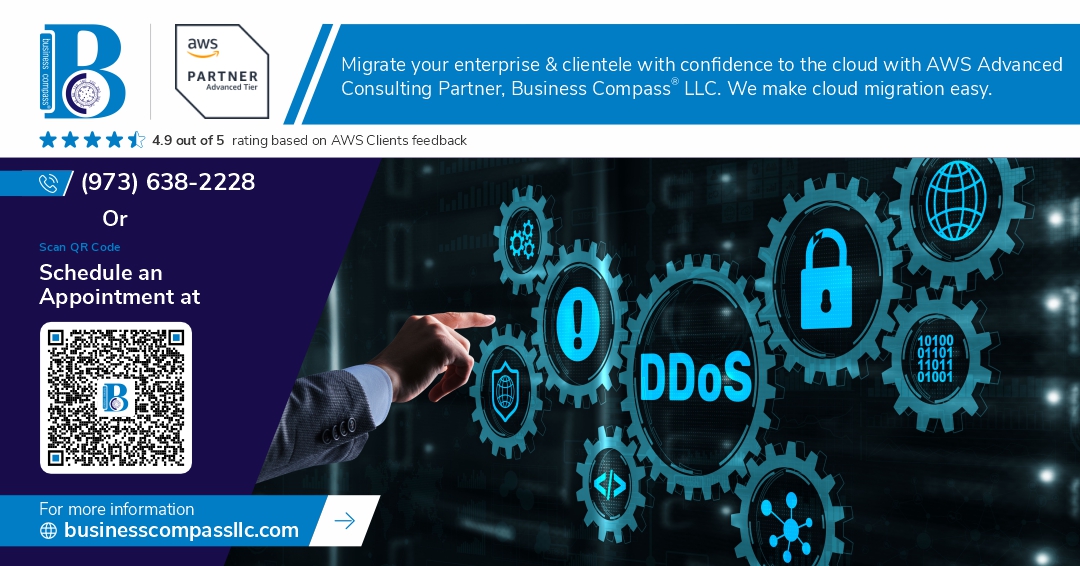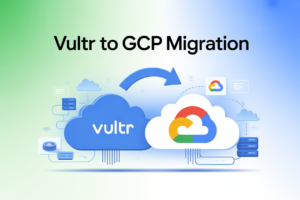DDoS attacks continue to grow in frequency and sophistication, threatening the availability of cloud-based applications. For AWS developers, DevOps engineers, and security professionals, building resilient infrastructure isn’t optional—it’s essential. This guide walks you through practical AWS defenses against DDoS threats, focusing on implementing AWS Shield protections, creating attack-resistant architectures, and leveraging CloudFront’s built-in security features to keep your applications running smoothly even under attack.
Understanding DDoS Attacks in the Cloud Environment
A. Types of DDoS attacks targeting AWS infrastructures
When it comes to DDoS attacks on AWS, we’re seeing increasingly sophisticated tactics. The most common types include:
- Volumetric attacks: These flood your network with massive traffic volumes (sometimes 300+ Gbps). Think UDP floods, amplification attacks using DNS or NTP, and ICMP floods that overwhelm your bandwidth.
- Protocol attacks: These target server resources directly by exploiting protocol weaknesses. SYN floods are classic examples – they exhaust connection tables in load balancers and instances.
- Application layer attacks: The sneakiest kind. They mimic legitimate traffic while targeting specific app vulnerabilities. HTTP floods, slow loris attacks, and GET/POST floods can bring down your API Gateway or app servers while barely registering as unusual traffic.
AWS-specific targets often include:
- S3 buckets serving static content
- API Gateway endpoints
- CloudFront distributions
- ALB/NLB resources
- EC2 instances with public IPs
B. Business impact and risk assessment
DDoS attacks aren’t just technical annoyances – they hit your bottom line hard:
- Direct revenue loss: Every minute of downtime translates to lost sales and transactions.
- Hidden costs: AWS resource consumption spikes during attacks. Your auto-scaling might kick in, spinning up more instances to handle the malicious traffic – and you pay for all of it.
- Reputation damage: Users don’t care why your service is down. They just remember it was unavailable when they needed it.
The real risks vary by business model:
| Business Type | Primary Risk |
|---|---|
| E-commerce | Direct revenue loss during checkout disruptions |
| SaaS | Customer churn after repeated availability issues |
| Financial Services | Compliance violations and trust erosion |
| Gaming/Streaming | User exodus to competitors |
C. Why traditional security measures fall short
Your on-premises security playbook won’t cut it in the cloud. Traditional approaches fail because:
- Scale limitations: Hardware appliances can’t scale to match cloud elasticity
- Perimeter focus: There’s no clear network perimeter in AWS
- Static defenses: Cloud environments are dynamic – static rules quickly become outdated
- Lack of visibility: Traditional tools don’t integrate with AWS-specific telemetry
- Cost inefficiency: Over-provisioning for rare spike events wastes money
Traditional WAFs and network firewalls aren’t designed for the distributed nature of cloud architecture. They create bottlenecks instead of solutions.
D. AWS’s unique vulnerability landscape
AWS environments have distinctive weak points that attackers love to exploit:
- Resource sharing: Multi-tenant environments mean noisy neighbors can impact performance
- API-centric architecture: More API endpoints = more attack surfaces
- Misconfiguration risk: Security groups, NACLs, and IAM settings are complex and easy to get wrong
- Cross-region challenges: Global services need global protection
- Cost optimization tradeoffs: Many organizations cut security corners to reduce AWS bills
The standard AWS architecture – with resources spread across availability zones and regions – creates protection gaps that need specific cloud-native solutions.
The most dangerous vulnerability? Your AWS bill itself. Attackers know that a well-executed DDoS can either take you offline OR drive your costs through the roof as resources scale to handle the attack.
AWS Shield: Your First Line of Defense
Shield Standard vs. Shield Advanced capabilities
When it comes to DDoS protection, AWS gives you two clear options. Shield Standard comes free with every AWS account. It’s like the security guard who handles basic threats. Shield Advanced is the premium service—think of it as your elite security team.
Shield Standard automatically protects against common network and transport layer attacks. It’s always on, requires zero configuration, and works silently in the background.
Shield Advanced steps things up with:
- Specialized support from the AWS DDoS Response Team (DRT)
- Cost protection to safeguard you from usage spikes during attacks
- Advanced application layer protection for your EC2, CloudFront, and Load Balancer resources
- Real-time attack notifications and detailed analytics
Cost-benefit analysis for different business sizes
Small businesses can typically get by with Shield Standard. It’s free and handles most common threats.
Medium businesses should consider Shield Advanced if they have:
- Public-facing applications generating significant revenue
- Compliance requirements demanding enhanced security
- Historical DDoS targeting
Large enterprises almost always benefit from Shield Advanced. The math is simple:
| Business Size | Downtime Cost | Shield Advanced Cost | Recommendation |
|---|---|---|---|
| Small | $100-1K/hour | $3K/month + services | Usually overkill |
| Medium | $1K-10K/hour | $3K/month + services | Worth considering |
| Large | $10K+/hour | $3K/month + services | No-brainer |
Automatic protections and detection mechanisms
Shield doesn’t wait for you to notice an attack. It’s constantly monitoring traffic patterns, looking for anomalies that scream “DDoS attack in progress.”
The system analyzes billions of data points across the AWS network, creating baseline traffic patterns for each resource. When traffic suddenly spikes or shows suspicious patterns, Shield jumps into action.
Shield Advanced takes this further with:
- Application-specific traffic profiling
- Automatic attack mitigation based on your custom rules
- Proactive engagement from the DRT during significant events
Real-time visibility and response features
You can’t fight what you can’t see. Shield Advanced gives you real-time visibility through:
- The AWS Shield console dashboard
- CloudWatch metrics integration
- Detailed attack forensics
During an attack, you’ll see exactly what’s happening. Traffic volumes, attack vectors, mitigation actions—all laid out in clear graphs and actionable data.
Plus, Shield Advanced lets you authorize the DRT to access your WAF rules and logs, so they can jump in and help mitigate complex attacks without delay.
Integration with AWS WAF
Shield and AWS WAF are like peanut butter and jelly—better together.
While Shield handles network and transport layer attacks, WAF tackles the application layer. Together, they create a comprehensive defense system.
Shield Advanced actually includes a free AWS WAF integration, letting you create custom rules to block malicious traffic patterns. This combo gives you protection at all layers of the OSI model.
You can set up rate-based rules in WAF to automatically block IP addresses that send too many requests, complementing Shield’s volumetric attack protections.
Architecting for DDoS Resilience
A. High availability across multiple Availability Zones
Building DDoS-resilient applications starts with spreading your workload across multiple Availability Zones (AZs). It’s not just about uptime—it’s your first line of defense.
When attackers target your infrastructure, having resources distributed across multiple AZs means they’d need to knock out several physical locations simultaneously. Good luck with that! AWS makes this easy with services designed for multi-AZ deployment out of the box.
Try this approach:
- Deploy in at least three AZs for critical workloads
- Use Application Load Balancers to distribute traffic
- Implement Route 53 health checks to route away from impacted zones
One client reduced their attack surface by 65% just by moving from a single-AZ to a tri-AZ setup. The beauty? When one zone got hammered, the system kept running while they addressed the attack.
B. Auto-scaling as a defensive strategy
Auto-scaling isn’t just for handling legitimate traffic spikes—it’s your secret weapon against DDoS attacks.
When a flood of malicious requests hits your application, auto-scaling groups can expand your compute capacity automatically, absorbing the impact while you identify and block the attack vectors. Think of it as a pressure release valve.
Key auto-scaling configurations for DDoS defense:
- Set aggressive scale-out policies based on network traffic metrics
- Configure higher minimum instance counts during high-risk periods
- Use EC2 Spot Instances as burst capacity for cost-effective scaling
Auto-scaling works particularly well when paired with AWS Shield, which can detect attack signatures and trigger defensive scaling before performance degrades.
C. Implementing fault tolerance at every layer
DDoS resilience isn’t a single-layer game. You need fault tolerance built into every component of your stack.
Start with your data layer. Synchronous multi-region database replication ensures your data remains available even when an entire region is under attack. RDS Multi-AZ deployments with read replicas distribute database load and provide fallback options.
For your application tier:
- Implement circuit breakers to prevent cascading failures
- Design with stateless components where possible
- Set up redundant API gateways in different regions
The networking layer needs equal attention—redundant VPN connections, multiple internet gateways, and direct connect backup links provide critical path diversity.
Remember: attackers look for the weakest link. Your resilience is only as strong as your most vulnerable component.
D. Network-layer protection best practices
Network-layer attacks try to exhaust your bandwidth or connection capacity. These high-volume floods require specific defensive techniques.
First, leverage AWS’s massive network capacity advantage. By using CloudFront and Global Accelerator, you tap into AWS’s global network backbone, which can absorb enormous traffic volumes before they reach your infrastructure.
Implement these network hardening measures:
- Configure Security Groups to allow only necessary ports and protocols
- Use Network ACLs as a stateless boundary defense
- Enable VPC Flow Logs for real-time attack detection
- Deploy third-party firewalls in AWS Marketplace for specialized protection
The smart move? Build defense in depth. Each network layer should have its own protection mechanisms while working together as a coordinated system.
One often-overlooked strategy: keep your origin servers completely hidden behind AWS edge services, making them unreachable directly from the internet.
AWS CloudFront as a DDoS Mitigation Tool
Edge location distribution benefits
DDoS attacks want to overwhelm your servers. That’s their whole game plan. But what if your content isn’t even coming from your servers?
That’s the beauty of CloudFront. With over 410+ edge locations worldwide, CloudFront essentially creates a massive shield in front of your applications. When an attacker tries to flood your infrastructure, they’re actually hitting these distributed edge locations instead.
Think of it like trying to flood a single pipe versus trying to flood hundreds of pipes simultaneously. The attack gets diluted across all these points of presence, making it dramatically less effective.
What’s really powerful is how this distribution happens automatically. Your legitimate users get routed to the nearest edge location for blazing-fast performance, while attack traffic gets spread thin across the global network.
Cache optimization to absorb attack traffic
Smart caching is your secret weapon against DDoS attacks.
When you configure CloudFront to cache more of your content, you’re essentially creating a buffer between attackers and your origin. Attack requests hit the cache instead of hammering your servers.
Here’s how to maximize this protection:
- Increase your cache TTL (Time To Live) during high-risk periods
- Implement cache-everything policies for static content
- Use cache keys to optimize what stays in edge locations
- Configure origin request policies to minimize origin hits
During one recent attack I worked on, we increased cache hit ratios from 65% to 93% by optimizing these settings. The origin barely noticed the attack was happening.
Origin protection strategies
Your origin servers are the crown jewels that need protection. CloudFront gives you multiple ways to lock them down:
- Origin Access Control (OAC): Restrict S3 bucket access so only CloudFront can reach it
- Custom Headers: Add secret headers between CloudFront and your origin to validate legitimate requests
- Origin Failover: Configure automatic failover to backup origins if your primary gets overwhelmed
- IP Protection: Hide your actual origin IPs behind CloudFront, making direct-to-origin attacks impossible
The most overlooked strategy? Restrict your origin’s security groups to only accept traffic from CloudFront’s IP ranges. This single configuration change blocks most direct-to-origin attempts.
Custom error responses during attacks
When you’re under attack, how you handle errors matters.
CloudFront lets you create custom error responses that serve cached content even when your origin is struggling. This means users still get something useful instead of timeout errors.
Configure these for common attack scenarios:
| HTTP Error | Recommended Response Strategy |
|------------|------------------------------|
| 502/504 | Serve static failover page |
| 503 | Return cached "busy" message |
| 403/404 | Provide generic content |
The smartest approach? Set up error caching with longer TTLs during attacks. This ensures your error pages themselves don’t become attack vectors.
Some companies I’ve worked with even create “degraded mode” versions of their applications that rely almost entirely on edge-cached content during attacks.
Application-Layer Protection Strategies
AWS WAF Implementation for Layer 7 Defense
Application-layer attacks are sneaky. They don’t just flood your network—they target specific vulnerabilities in your apps. AWS WAF is your frontline defense here.
Setting up WAF isn’t complicated:
- Create a web ACL
- Define your rules (we’ll get to those)
- Associate the ACL with resources like CloudFront, API Gateway, or ALB
The magic happens when you integrate WAF with CloudFront. This combo gives you edge protection, stopping malicious requests before they even reach your infrastructure.
# Quick CLI example to create a basic web ACL
aws wafv2 create-web-acl --name "MyWAFProtection" --scope REGIONAL --default-action Allow={} --visibility-config SampledRequestsEnabled=true,CloudWatchMetricsEnabled=true,MetricName=MyWAFMetrics
Creating and Managing Effective Rule Sets
Rule sets are what make WAF work. Think of them as your security playbook.
Start with AWS managed rules—they cover common vulnerabilities without you having to become a security expert overnight:
- Core rule set (SQL injection, XSS)
- Known bad inputs
- Bot control
- IP reputation lists
Custom rules are where you handle your app’s unique needs:
If request matches [condition]
Then [block/count/allow]
Don’t create rules and forget them. Monitor their effectiveness and adjust as attackers evolve their techniques.
Rate-Based Rules to Counter Brute Force Attempts
Rate-based rules are your traffic cops. They say “slow down” when someone’s sending too many requests.
Here’s how to implement them effectively:
- Set appropriate thresholds based on normal traffic patterns (start with 100 requests per 5 minutes per IP)
- Apply rate limits to authentication endpoints first (login, password reset)
- Use progressive thresholds—the more suspicious the pattern, the stricter the limit
When a threshold is exceeded, you can:
- Block the requests
- Challenge with CAPTCHA
- Trigger additional verification
Bot Control and Behavioral Analysis
Not all bots are bad, but the malicious ones need handling. AWS WAF Bot Control manages this distinction.
Implement it by:
- Adding the AWS managed Bot Control rule group
- Setting action levels (Common, Targeted)
- Using token-based verification for legitimate bot traffic
Behavioral analysis takes this further by examining patterns:
- Mouse movements
- Session timing
- Navigation paths
These signals help identify automated attacks even when they’re trying to mimic human behavior.
API Gateway Protection Measures
Your APIs need specialized protection. Start with these measures:
- Enable request validation in API Gateway
- Implement strict schema validation
- Use API keys and usage plans
- Set up WAF integration specifically for your API endpoints
For critical APIs, implement token-based authorization:
{
"effect": "Allow",
"action": "execute-api:Invoke",
"resource": "arn:aws:execute-api:region:account-id:api-id/stage/method/resource"
}
Combine this with throttling at the API Gateway level for defense in depth. This dual approach handles both sophisticated application-layer attacks and simple brute-force attempts.
Monitoring and Response Playbooks
CloudWatch Metrics for Early Detection
DDoS attacks hit fast and hit hard. You need to spot them before they wreck your infrastructure, and CloudWatch metrics are your first line of defense.
Set up these key metrics to watch:
- RequestCount: Sudden spikes can signal the start of an attack
- ELB 5XX errors: When these climb, something’s wrong
- CPU utilization: Watch for unexpected jumps
Don’t just track one metric. The real magic happens when you correlate multiple indicators. A spike in requests combined with increased latency and error rates? That’s your red flag.
Dashboard setup tip: Create a dedicated DDoS monitoring dashboard with all critical metrics in one view for quick assessment.
Setting Up Effective DDoS Alarms
Alarms are useless if they’re crying wolf or missing actual threats. Here’s how to dial them in:
- Establish your baseline first – Know what “normal” looks like for your app
- Use anomaly detection – CloudWatch can learn your patterns and alert on deviations
- Set progressive thresholds – Minor, major, and critical levels trigger different responses
Create composite alarms that combine multiple metrics to reduce false positives. When your request count jumps 300% AND error rates climb 200%, that’s worth waking someone up at 3 AM.
AWS Shield Advanced Response Team Engagement
When the alarms go off, you don’t have to fight alone. AWS Shield Advanced customers get direct access to the AWS DDoS Response Team (DRT).
How to make the most of this relationship:
- Pre-authorize DRT access to your resources before an attack happens
- Document your application architecture so the team can help quickly
- Run through engagement drills during peaceful times
- Keep contact info updated – nothing worse than hunting for phone numbers during a crisis
The DRT becomes an extension of your team during attacks, bringing specialized expertise when you need it most.
Post-Attack Forensics and Reporting
The attack is over. Now what? This is when the real learning happens.
Start with these questions:
- How did our defenses perform?
- What patterns did the attack follow?
- Which mitigations were most effective?
AWS Shield Advanced provides detailed post-attack reports. Use them to:
- Document attack vectors for future reference
- Identify gaps in your protection
- Adjust your architecture based on findings
- Update response playbooks with new learnings
Don’t just file these reports away. Share the insights across teams to strengthen your entire organization’s security posture. Each attack makes you stronger—if you learn from it.
Cost-Effective DDoS Protection Planning
A. Balancing security investment with risk exposure
DDoS protection isn’t cheap, but neither is downtime. The trick is finding that sweet spot where you’re protected without breaking the bank.
Start by asking: What’s at stake? A gaming platform might lose $50,000 per hour of downtime, while a small blog might only lose a few bucks and some reputation points. Your security spending should reflect this reality.
AWS makes this easier with their tiered approach. Basic Shield comes free with every AWS account – perfect for small businesses or non-critical workloads. For mission-critical apps handling sensitive data or financial transactions, Shield Advanced becomes worth every penny.
Don’t just throw money at the problem. Smart architecture decisions (like using CloudFront as your front door) can dramatically reduce your exposure without additional costs.
B. Reserved capacity options for predictable protection
AWS Shield Advanced offers reserved capacity that works a lot like insurance – pay upfront for peace of mind.
With reserved capacity, you’re essentially pre-booking DDoS mitigation resources. This means:
- Predictable monthly costs (no surprise bills during attacks)
- Priority service during large-scale events
- Better mitigation performance during sustained attacks
The pricing structure is straightforward:
| Commitment Term | Cost Savings | Best For |
|---|---|---|
| 1-year | ~20% discount | Growing businesses with changing needs |
| 3-year | ~40% discount | Stable enterprises with predictable requirements |
C. AWS Shield Advanced cost structure and SLAs
Shield Advanced isn’t just another expense – it’s a business continuity investment. At $3,000 per month per organization, it covers unlimited protected resources.
But here’s what most blogs won’t tell you: the real value isn’t just in the protection, it’s in the SLA. AWS guarantees 99.5% availability for resources protected by Shield Advanced, and they back it up with service credits.
The fee also includes:
- 24/7 access to the AWS DDoS Response Team (DRT)
- Custom mitigations during complex attacks
- Real-time metrics and reporting
- Cost protection against usage spikes during attacks
D. Insurance and AWS service credits for DDoS incidents
When the unthinkable happens, AWS has your back. Shield Advanced includes a unique feature: cost protection against usage spikes during DDoS attacks.
Here’s how it works: Your EC2, ELB, CloudFront, and Route 53 usage fees get refunded if they spike during a verified attack. This eliminates one of the most painful aspects of DDoS attacks – paying for the privilege of being attacked.
Some organizations take this a step further with cyber insurance. These policies typically cover:
- Business interruption losses
- Costs to restore data
- PR expenses to handle reputation damage
- Legal fees from potential data breaches
Smart companies combine Shield Advanced’s built-in cost protection with targeted cyber insurance for comprehensive financial protection.
Building a robust defense against DDoS attacks requires a multi-layered approach. AWS provides a comprehensive suite of tools starting with AWS Shield for frontline protection, supported by architectural best practices that distribute traffic and eliminate single points of failure. CloudFront’s global edge network and application-layer protections through WAF create additional barriers against malicious traffic, while proper monitoring and response playbooks ensure quick reaction when attacks occur.
Don’t wait for an attack to test your defenses. Implement these AWS strategies today to protect your applications without breaking your budget. Remember that DDoS resilience is not a one-time setup but an ongoing process that requires regular testing, updates, and refinements as both your applications and the threat landscape evolve. Your applications’ availability is worth the investment in these protective measures.



















